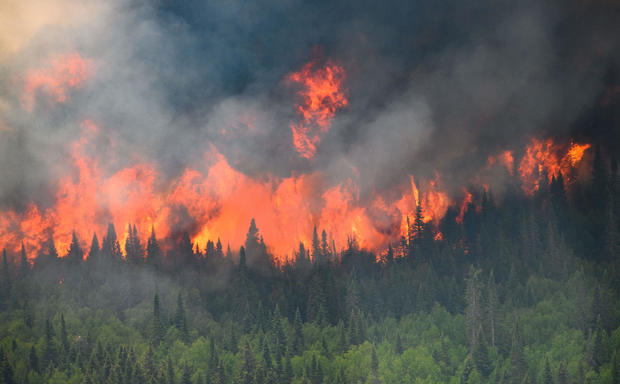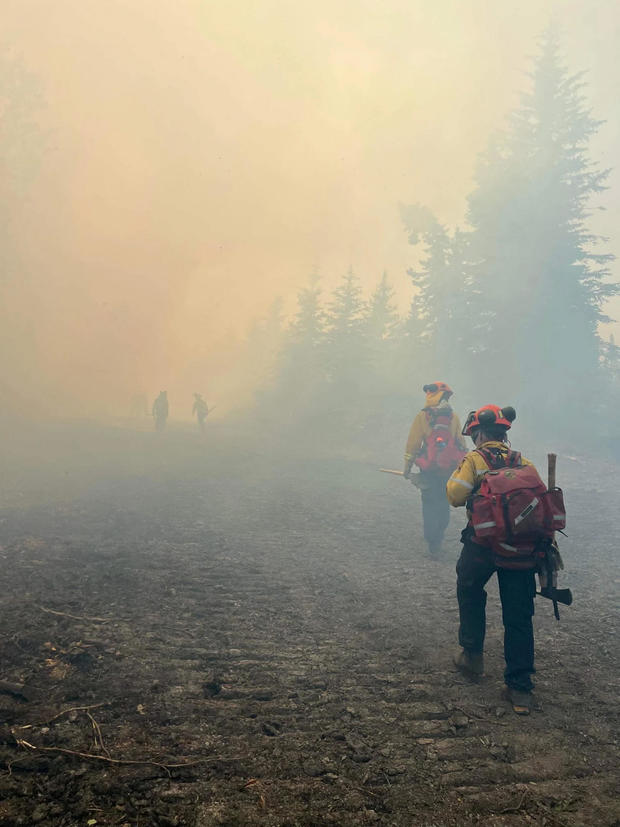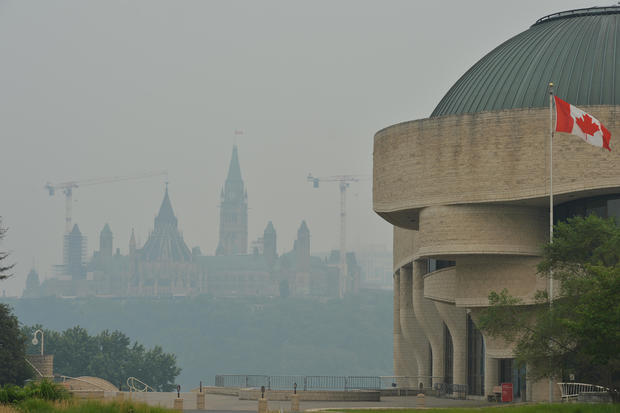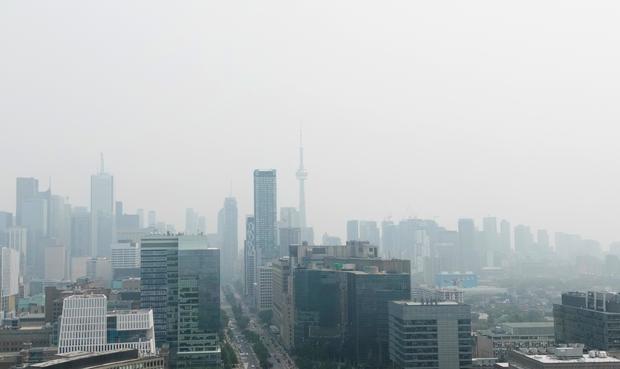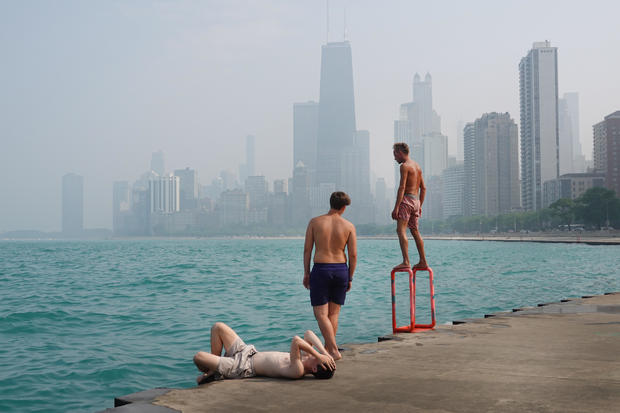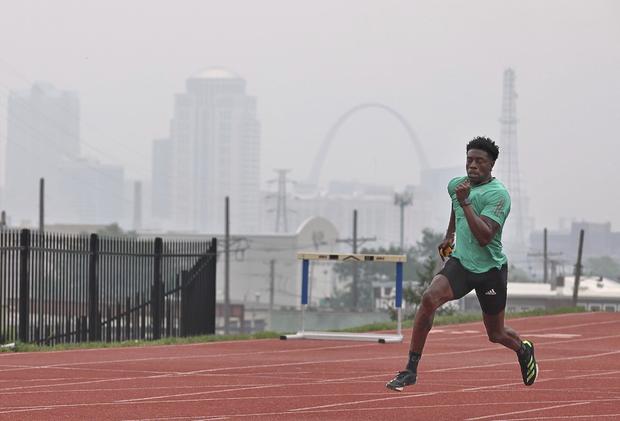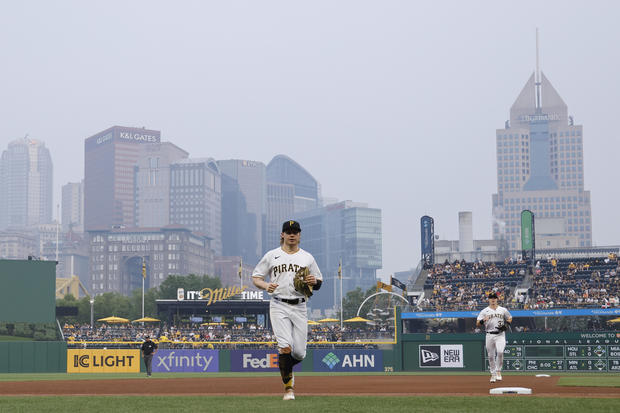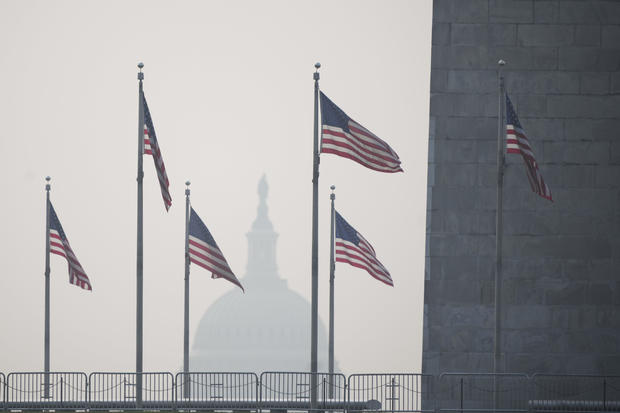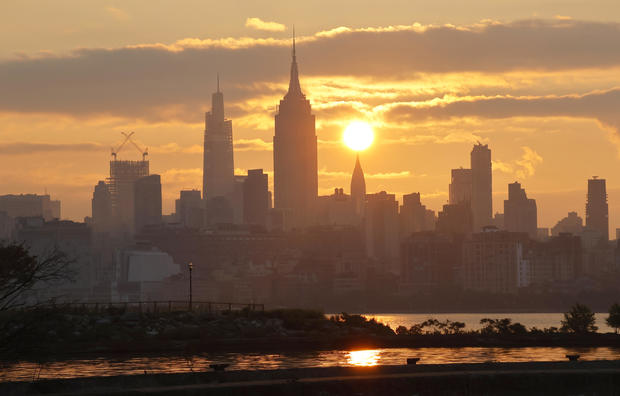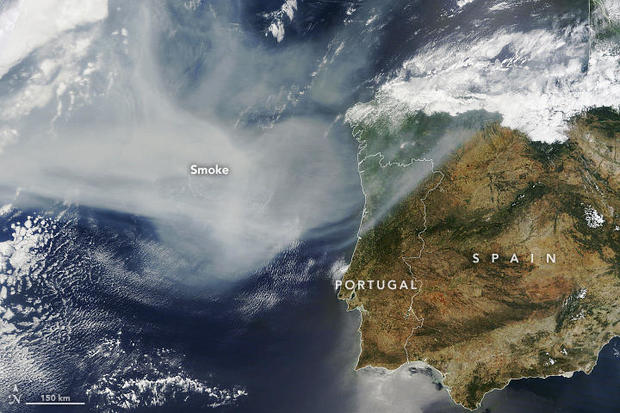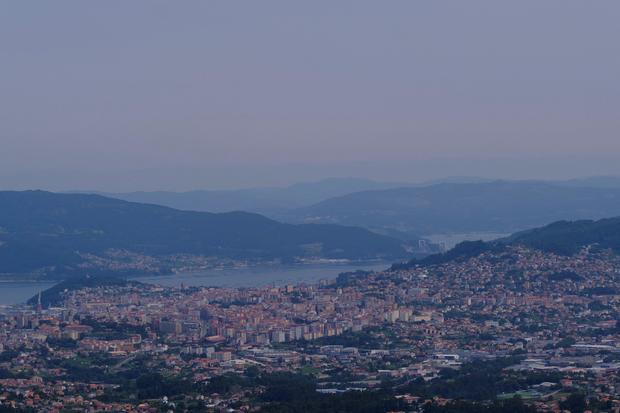Wildfires in Canada have been raging for weeks and there are 500 fires burning in the country, the vast majority uncontrolled. The fires are sending smoke into the U.S. and as far as Europe. Here are videos and pictures of the Canadian wildfires and their impact.
Canada
Wildfires are burning in several Canadian provinces. In Quebec, the fires were sparked by lightning. The fires raging in Alberta have an unknown cause, but this province, as well as Saskatchewan and Manitoba, have been hit with bad droughts. This and record heat have contributed to the fires.
Wildfires in Canada throughout May and June have created a record level of emissions and many of the fires show little sign of slowing down, according to the European Union’s Copernicus Atmospheric Monitoring Service.
As of June 28, there are 500 fires burning in the country, with 256 out of control, and 8.1 million hectares — more than 31,000 square miles — have burned, according to Canada’s Interagency Forest Fire Center. Most were in Quebec or British Columbia.
The wildfires have affected air quality in many cities – and not just in Canada, but also in the U.S. The cities closest to the source will have more intense levels of smoke and worse air quality, meteorologist Jen Carfagno and hurricane and storm specialist Greg Postel, both of The Weather Channel, told CBS News.
The Midwest
On Tuesday, Midwestern cities like Chicago, Minneapolis and Detroit had some of the worst air quality in the world. The smoke from the wildfires to the north caused “very unhealthy” air quality conditions, according to the federal AirNow site, prompting officials to urge people not to go outside for long periods of time, especially those with sensitivities.
By Thursday, Minneapolis had been downgraded to “moderate” air quality and Detroit and Chicago were “unhealthy,” according to AirNow.
Eastern U.S.
Cities like Pittsburgh and Washington, D.C. saw the effects of the wildfire smoke Wednesday and Thursday as it seeped across the U.S. Both cities were issued air quality alerts. Carfagno and Postel said Washington, D.C. was projected to be the East Coast city affected the most this week.
As of Thursday morning, D.C. had the worst air quality in the world, followed by Chicago and Detroit, according to IQ Air. The company tracks air quality around the world.
As of Thursday morning, New York had “moderate” air quality and Philadelphia was labeled “unhealthy,” according to AirNow, and both cities were under air quality alerts.
Earlier in June, both cities were covered in a dusty haze as the smoke converged on them. The haze, which often makes the sky look bright orange during sunrise or sunset, lasted about a day.
Cities in northwestern New York, like Buffalo, had unhealthy air quality and saw the haze on Wednesday. While National Weather Service Buffalo forecast the area could get worse, it said Thursday the smoke was expected to thin throughout the afternoon.
Europe
On Monday, NASA said images from its Terra satellite showed smoke moving across the Atlantic to Europe, affecting Spain and Portugal and later spreading to other countries. Images from Spain showed the sky looking hazy from the smoke on Monday.

